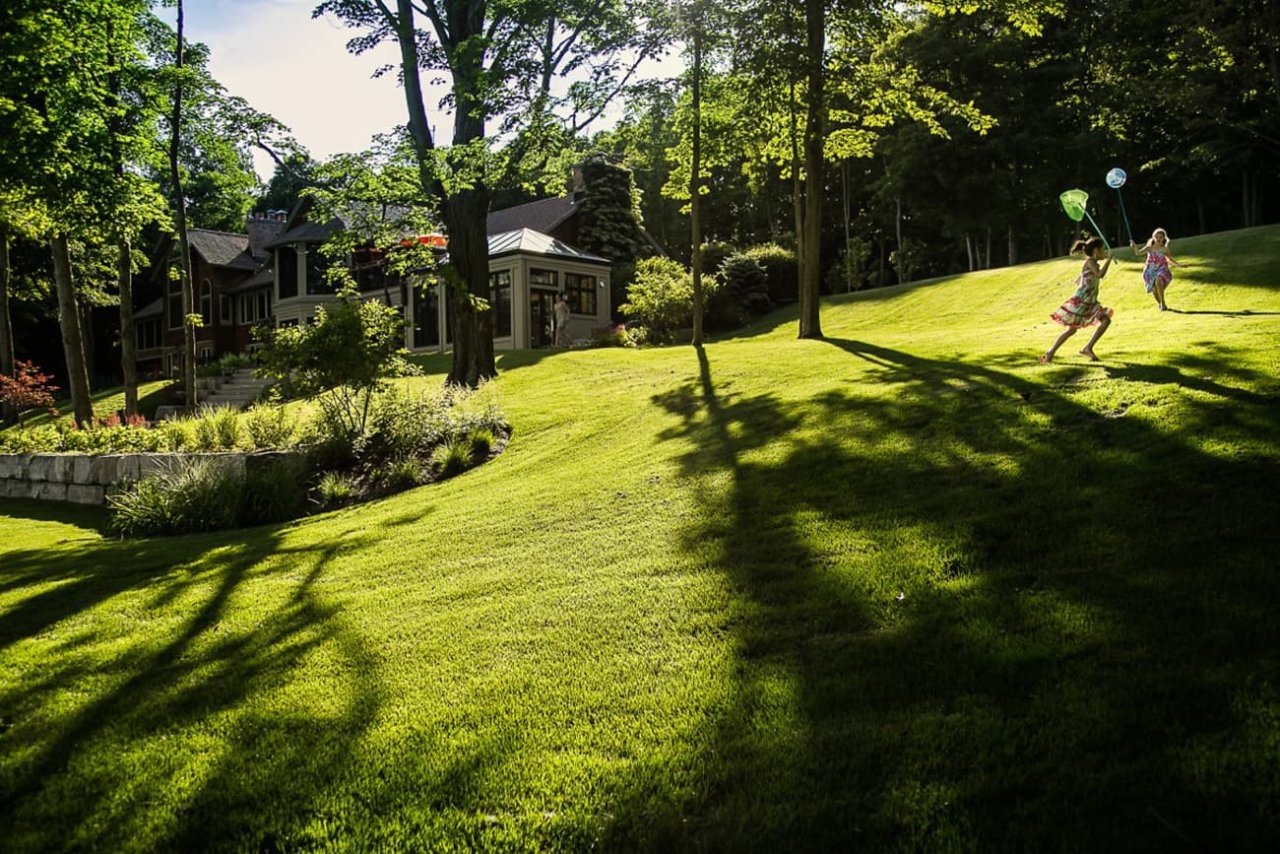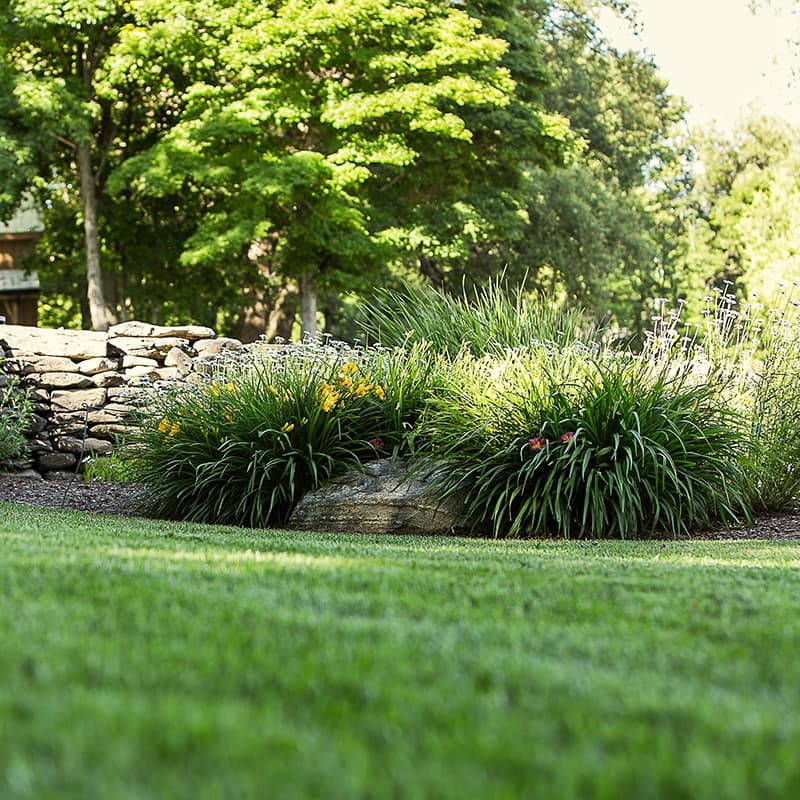Blog
4 Steps To Prepare Your Lawn this spring

Spring has sprung so it’s time to start thinking about lawn preparation in an effort to help it thrive in the upcoming summer months. After several cold months of your lawn laying dormant under the snow, it’s important to take the necessary steps to help repair and restore, in order for your lawn to grow back fuller and healthier. Although beautiful landscapes don’t happen on their own, they require time and work, but the quality and look of your landscape will be rewarding in the long run and increase your property value.

1. Do a thorough lawn clean up
Winter can sometimes leave our yards looking like a disaster zone in the spring, littered with tree branches and leaves, or sometimes even garbage that has blown in. Yuck! It’s important to have it all collected before the mowing season starts. It might be tempting to take a short cut and just mow over it but this debris can dull mower blades and make an even bigger mess when run over, taking longer to clean up.

2. Assess the lawn and do soil test
Seeing the state of your lawn can sometimes be a surprise once the snow has melted, assess your lawn and be on the lookout for winter damage such as snow mold, dead patches of grass and torn up turf (caused by snow plows):
Here are some things you should be looking for:
-
Snow mold - Do you see dead patches with white/grayish web-like coating on top? It could be snow mold which is a type of fungus that grows from the moisture of the snow. The best way to prevent this is keeping your lawn free of leaf debris in the fall and cutting your lawn a little shorter before the winter season starts, longer grass keeps moisture in whereas shorter grass does not. Unfortunately, if you see snow mold on your lawn the damage has already been done to your lawn, but what you can do is repair those areas by lightly raking the affected areas and adding seed.
-
Turf damage from snow plow and road salt - A very common problem for home owners is their turf being torn up by road and sidewalk plows or the salt killing the edges of their grass. In this case the best option is to repair the damaged areas with top dressing and seed. If there is severe damage to your lawn patching up the areas with new sod might be the better option. To prevent this issue remember to put reflective markers along the road and up your driveway before the snow falls.
It is also important to get your soil tested to get a better understanding of the health of your soil and how that will impact the quality and growth of your lawn. These tests determine the PH level of your soil (your soil should be neutral: around 7 range) and what nutrients are present or lacking. The best way to correct this is with organic fertilizers.

3. Aerate (if needed)
Over time your lawn's soil becomes more compact due to foot traffic or small machines such as lawn mowers. This can be an issue for your lawn's health because it diminishes the amount of pores in the soil, preventing water infiltration and reduces the amount of oxygen, therefore resulting in your grass roots being deprived of their basic needs. This is where aeration comes in handy. Aeration is the process of punching holes in the ground in order to loosen up the soil, creating more pores thus allowing air, water, and nutrients to reach the grass roots, helping them grow deeper and stronger. This does not have to be done regularly. If you are unsure whether or not you need to aerate your lawn just take a closer inspection, here are some signs your lawns soil is compacted:
- Water pools after a heavy rainfall (water doesn’t drain due to compacted soil)
- Grass is thin and brown (the grass roots are being deprived of water, air and nutrients)
- Ground feels hard or you find it difficult to to dig into the soil

4. Top dress and overseed (if needed)
Top dressing is the process of spreading a thin layer of sandy soil or compost all over or sections of your turf then throwing an even coat of grass seed on top. There are several reasons why top dressing and overseed is beneficial for your lawn:
- Levels uneven turf - If you notice bumps and dips in your lawn add top dressing to the problem areas to level it out
- Great for repairing patchy or damaged turf - If you are experiencing patchy turf apply top dressing to damaged areas then throw an even coat of grass seed.
- Improves turf soil - Applying top dressing on your turf adds nutrients to your existing lawn's soil and reintroduces microorganisms back into the earth.
- Breaks down thatch - The microorganisms in top dressing can break down the thatch build up in the lawn.
- Retains moisture - The thin layer of top dressing is great for keeping moisture in the ground which is great for your turf roots!
In short, the key to a beautiful lawn is putting in time and effort. However, the summer season in Ontario is short so it’s understandable that most people rather spend their free time enjoying the weather rather than working through it. If your idea of fun isn't tending to your lawn and gardens then leave the work to us and get busy doing the things you love to do outside! Our horticulturists and maintenance teams get down to the weeds to keep your lawn (and gardens) looking lush and weed-free so you don’t have to.
For more info on our services and packages click here.
Not sure if you want to invest time (or money) into your lawn? Find out the impact of turf has on the environment.
Posted: April 20th, 2022
View More Posts